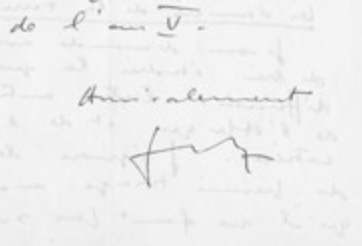Whither Marginalia?
November 5, 2024
What are in the margins of the books in Fanon’s library?
Perhaps the first person to access this library was Nigel Gibson, who in his blog made the following observations about the library’s contents:
I came across some Freud volumes. The Introduction to Psychoanalysis was quite heavily marked up and included such unorthodox comments as “Freud is a paranoiac” and “you are mad in Austria!” Fanon seemed particularly interested in the notes on infantile sexuality in Three Essay on the Theory of Sexuality, but at times seemed equally skeptical: “You exaggerate,” he writes, and notes that Bachelard is better (referring to Gaston Bachelard’s Psychoanalysis of Fire). He also had some fun with Jung, writing in Jung’s Man in Search of his Soul, “Jung is doing sorcery.” Many times in Freud and Jung’s texts (and certainly not only reserved for them) he writes “Salaud,” or just plain “faux.” Then we came across Kojéve and also Hegel’s Phenomenology. Kojéve’s lectures had extensive markings and in the Phenomenology Fanon had marked up the passages he quoted in Black Skin White Masks.
-- Nigel Gibson, “Unpacking Fanon’s Books”
Gibson deliberately and casually neglects all of Josie’s books, going so far as to neglect all books published between 1956 and 1961, since the collection was always housed in Algiers, and it is not clear what books Josie brought back from Tunis after Algerian independence. In other words, he is not sure which book belonged to whom for books published between 1956 and 1961.
Perhaps a more exhaustive “reading” of Fanon’s margins appears in the section, “Frantz Fanon’s Library,” by Jean Khalfa in the book Alienation and Freedom. Khalfa gives us extensive and precise notes on Fanon’s annotations, although it appears that the vast majority of notes were “markings.” It isn’t surprising that Fanon did not leave much annotation—after all, he was simply not in the habit of writing, preferring to instead dictate to his wife. Nevertheless, Khalfa too ignores all of Josie’s books, which remain a mystery to most researchers.
Currently in progress is a project, part of MAPPING FANON, to make Frantz and Josie Fanon’s handwritten markings and annotations available digitally.
